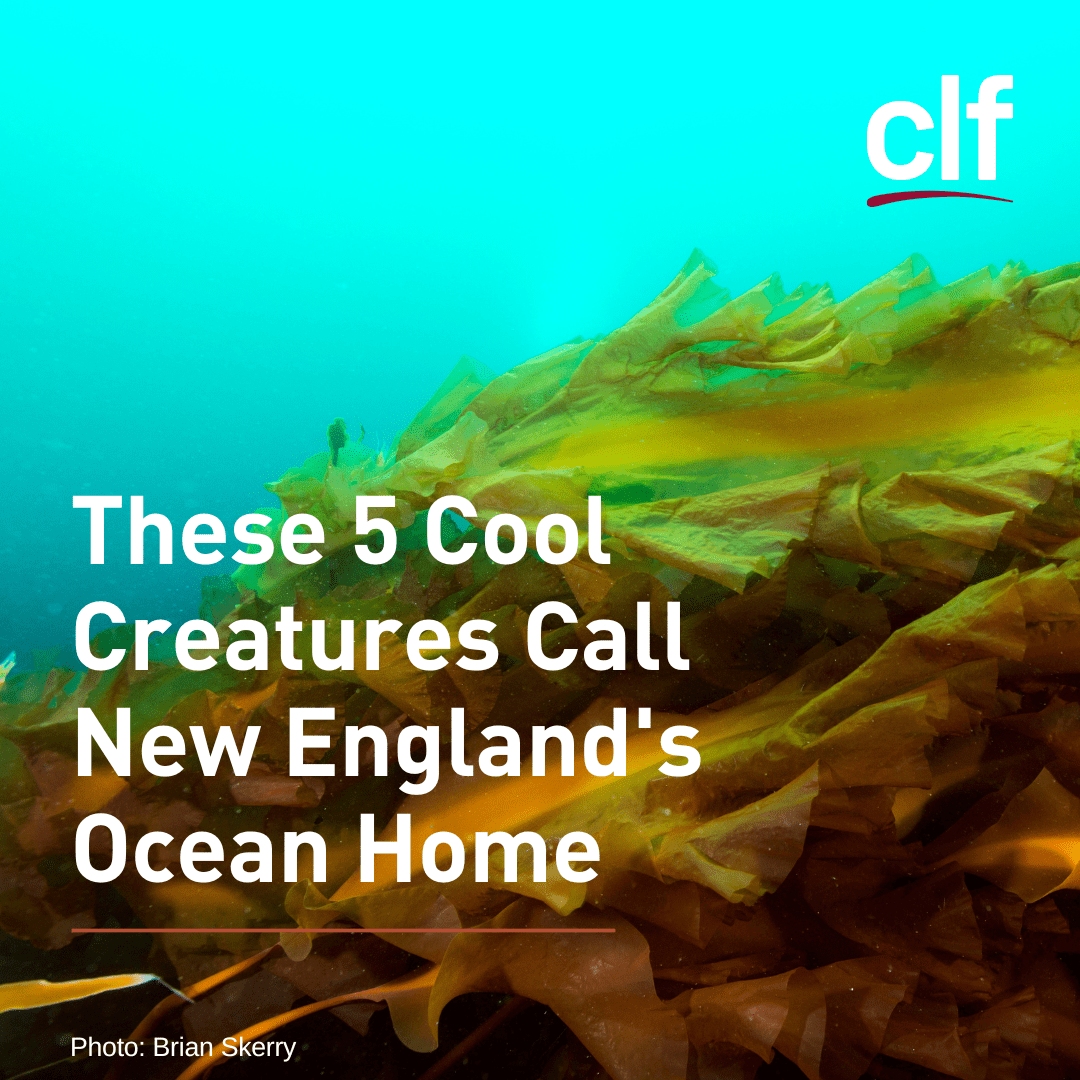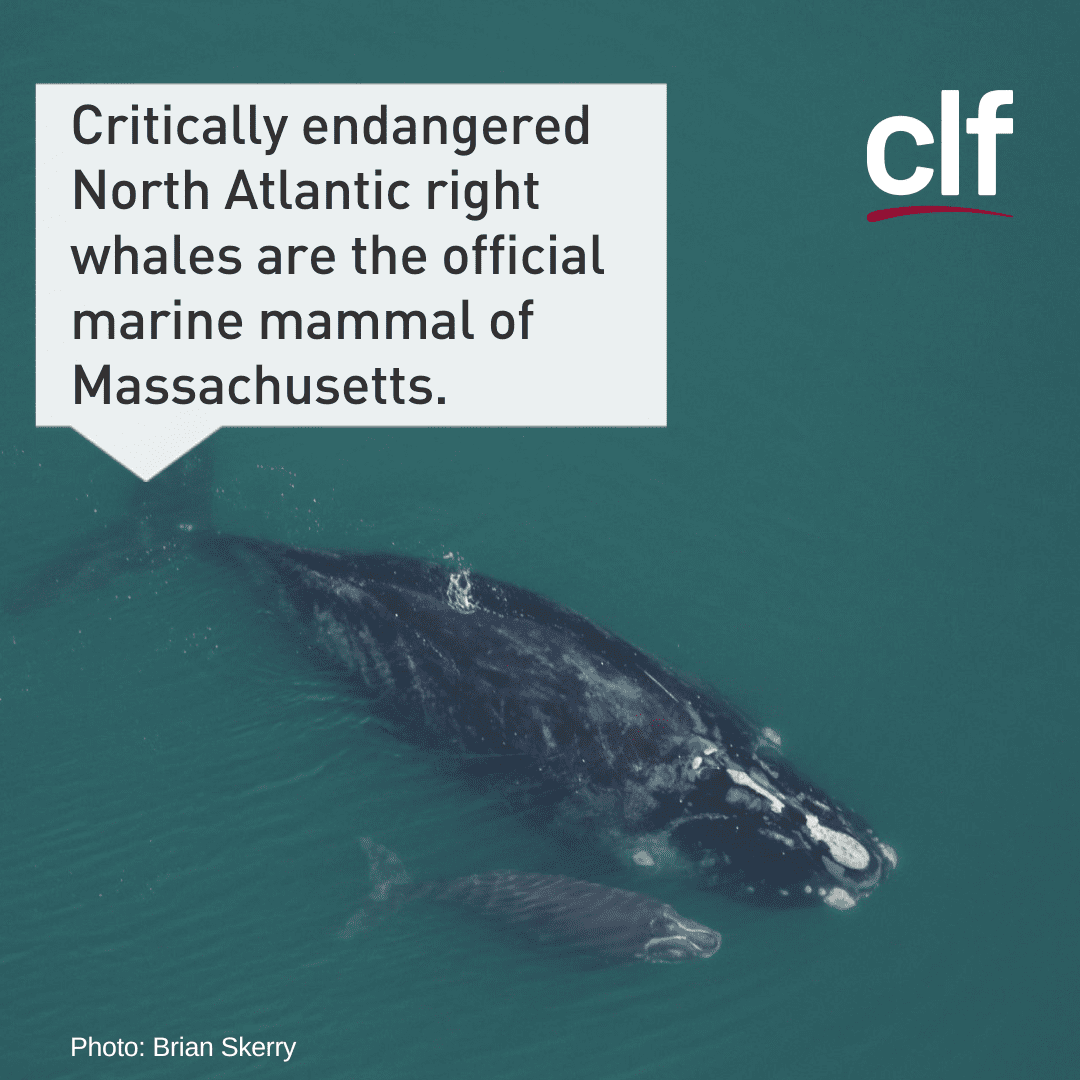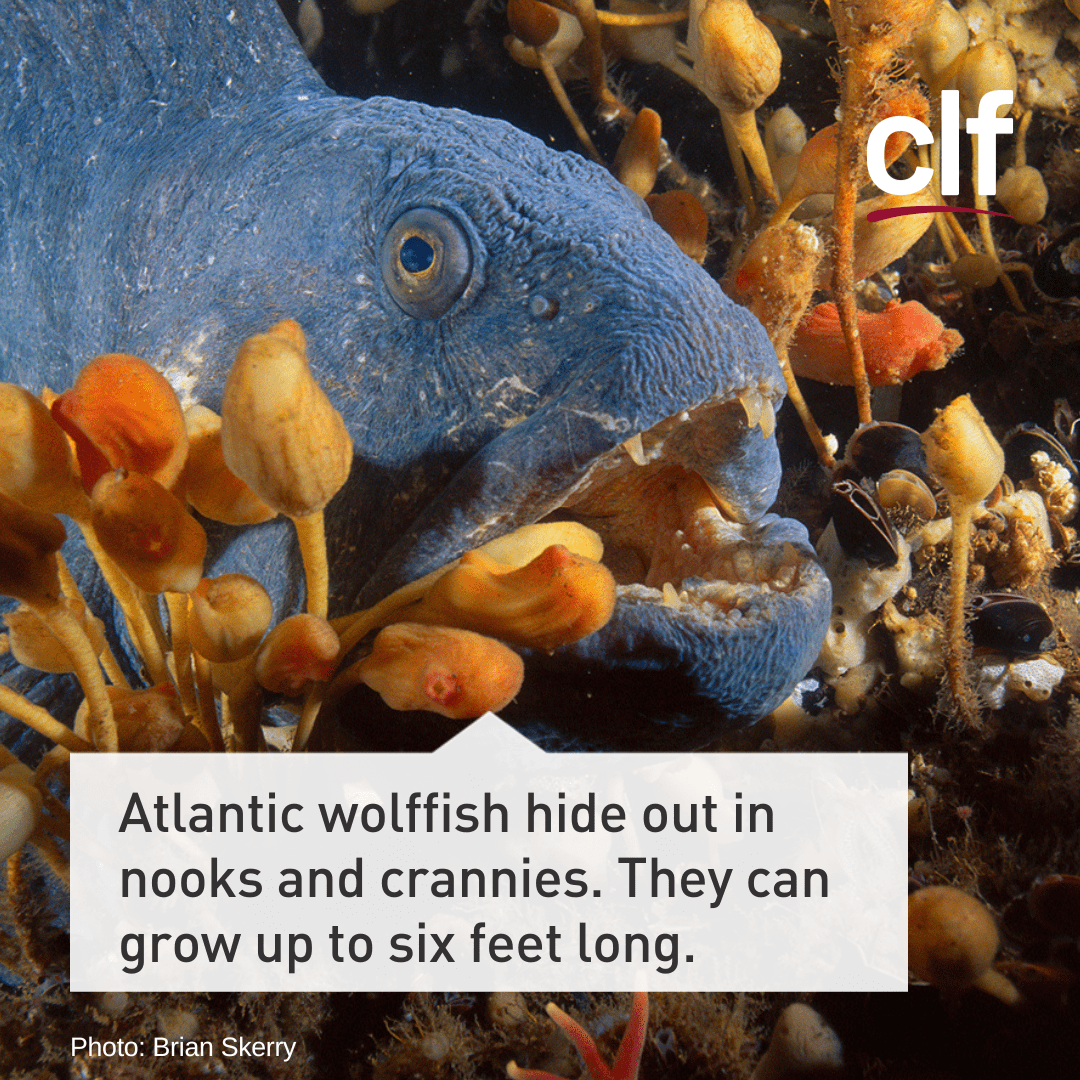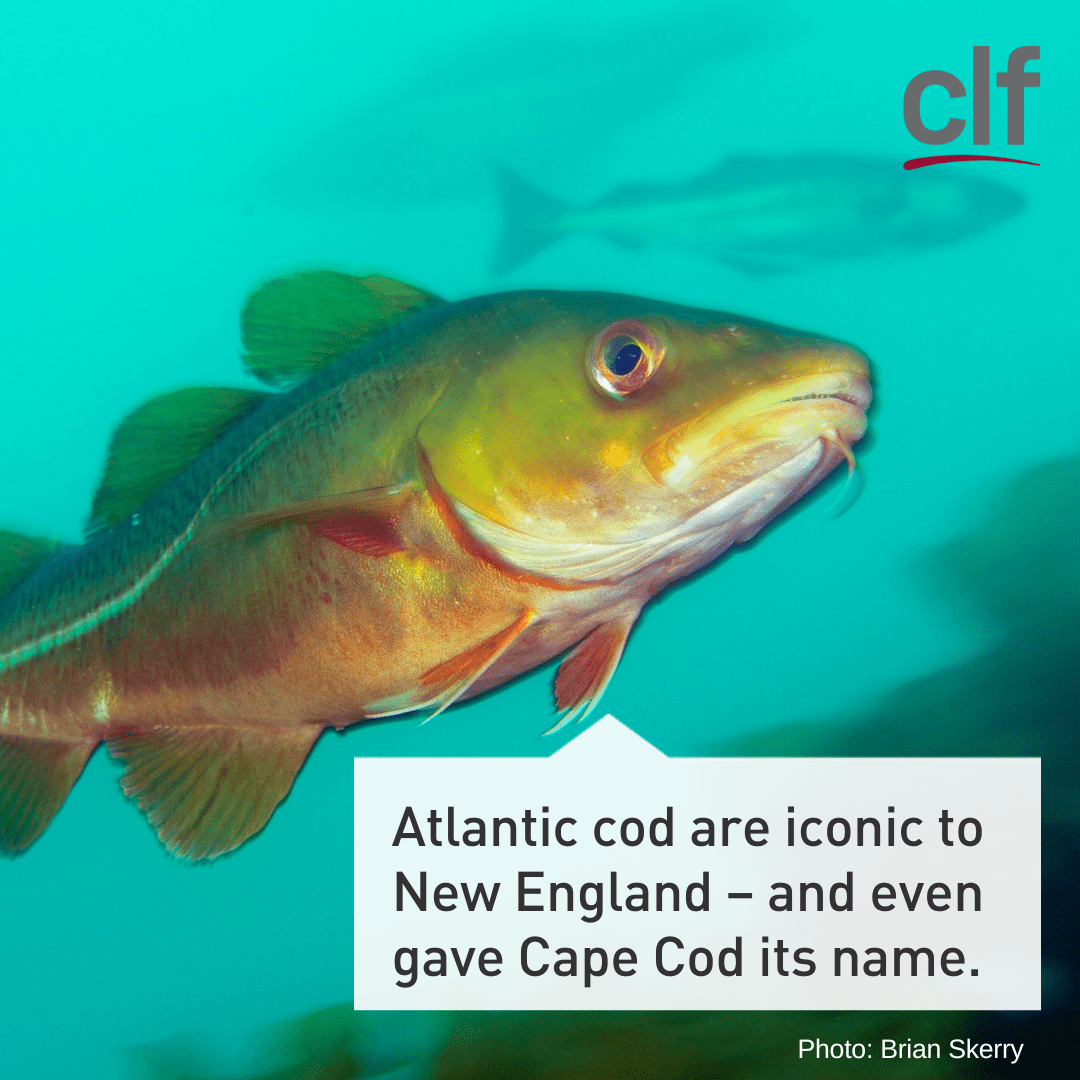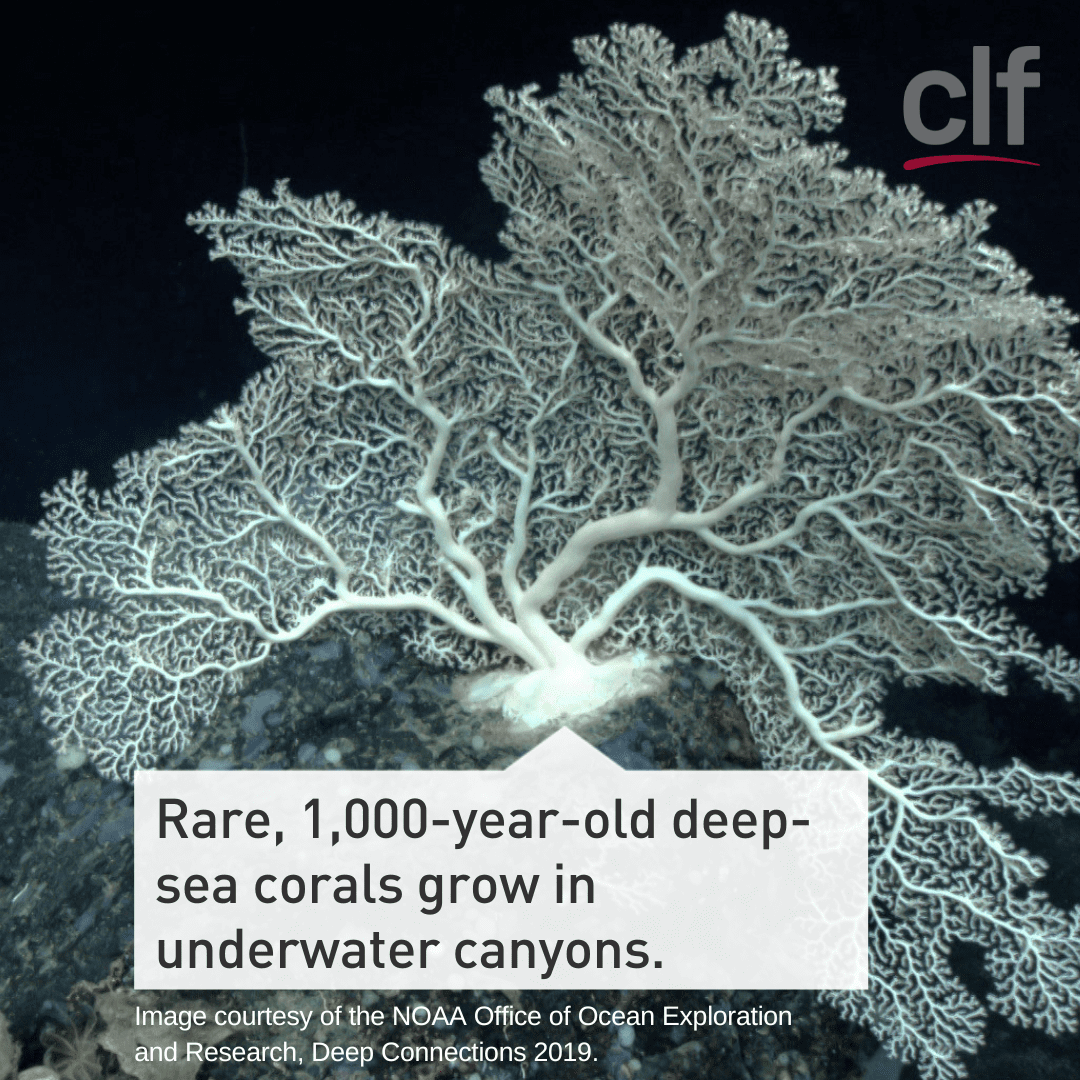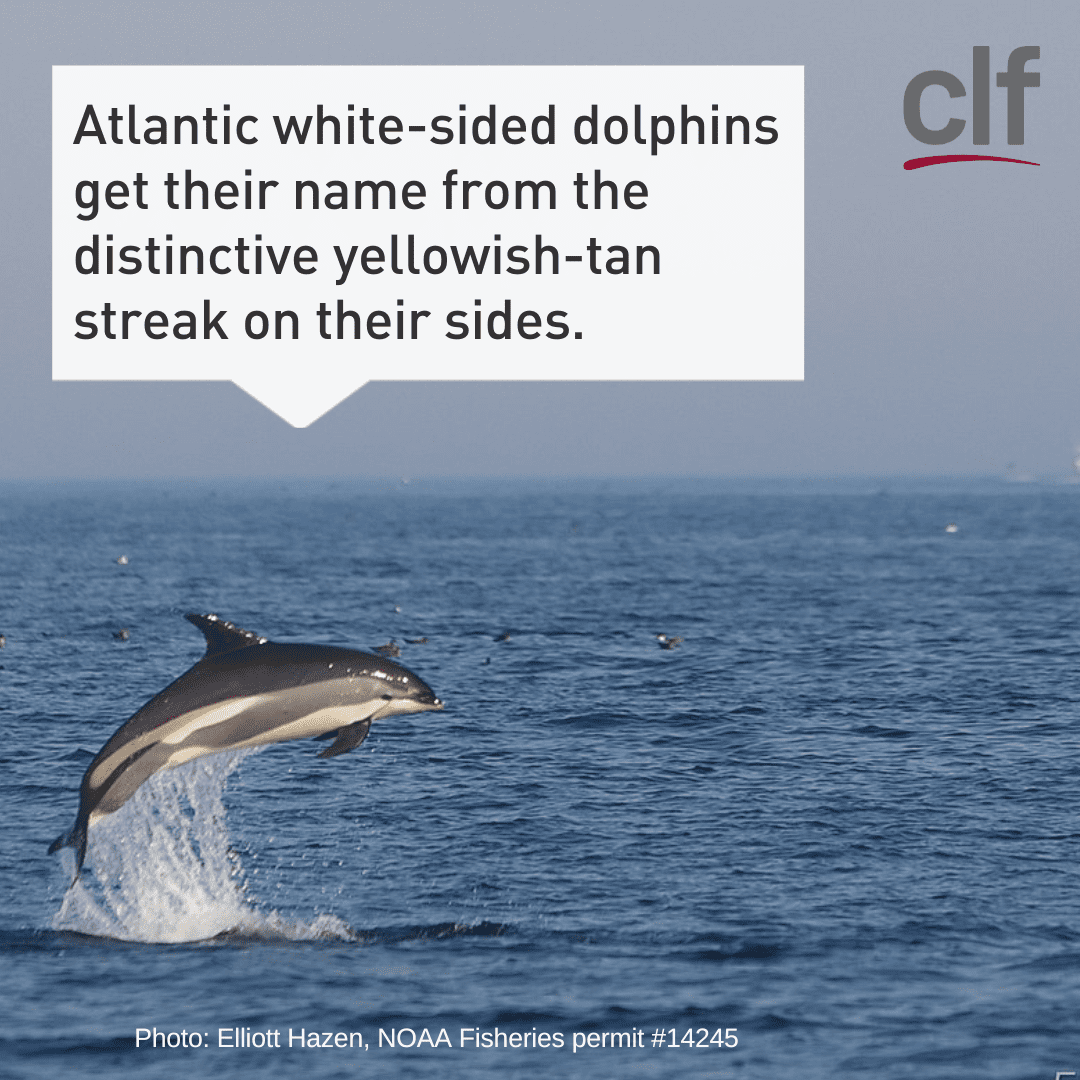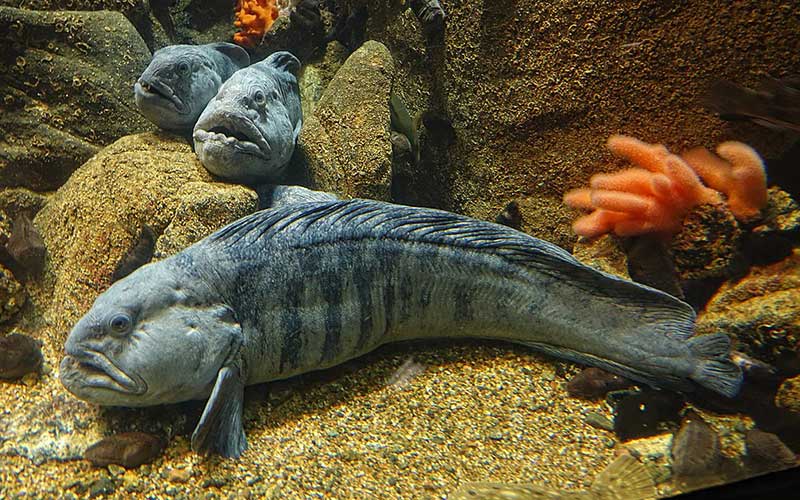
New England's ocean is home to many fascinating creatures, including the rare Atlantic wolffish. Photo: Bjorn Christian Torrissen/CC-BY-SA-4.0
New England’s ocean is full of fascinating and beautiful marine life. Each of these species depends on a healthy ocean to thrive, and all are impacted by the threat of warming waters caused by the climate crisis. Protected areas in our ocean, like the Northeast Canyons and Seamounts Marine National Monument, are known to help stave off the worst impacts of climate change by keeping these ecosystems intact and thriving.
Here are just five of the many cool creatures that thrive in New England’s ocean.
North Atlantic Right Whales
These majestic creatures are New England’s iconic whale (they’re even the official marine mammal of Massachusetts). They cruise at a leisurely one mile per hour, scooping up thousands of pounds of krill as they go. But your chances of seeing this critically endangered species in the wild are not as likely as they should be: Fewer than 350 right whales remain on the planet today. If you do catch a glimpse of a right whale, you might be able to identify them based on the unique pattern of callosities, the hardened patches of skin on their heads and jaws. Many whales are named after their callosities, including Wishbone, Popcorn, and Cottontail.
Atlantic Wolffish
Named for its jumble of sharp teeth, the Atlantic wolffish can grow up to six feet long. This solitary species lives hundreds of feet below the water’s surface on the seafloor, where it hides in rocky outcroppings and broken terrain with nooks and small caves. Wolffish use their pointed canines to crush whole clams, scallops, lobsters, sea urchins, and green crabs. Its range used to extend as far south as New Jersey, but habitat destruction and overfishing have caused a steep decline in its population. Today, it is found primarily in the Gulf of Maine, Georges Bank, and the Great South Channel.
Atlantic Cod
This fish that built New England needs no introduction. It’s where Cape Cod got its name, and the “sacred cod” hangs in Massachusetts’ state house. Older, larger cod — called Big Old Fat Fecund Females, or BOFFFs — are critical to the species’ survival: one BOFFF can lay as many eggs as 35 smaller cod! The triple threat of overfishing, habitat degradation, and climate change puts the species at risk.
Deep-sea Corals
The deep-sea corals growing in the canyons off the coast of Cape Cod have likely been alive for more than 1,000 years. Some are the size of small trees, with brittle branches in shades of orange, pink, and yellow; other soft corals are white and billow like ghosts. Deep-sea corals grow slowly — only a millimeter or two each year — and can be destroyed by a single fishing trawl knocking into them. Scientists are still discovering new species with each expedition, emphasizing the need to protect this otherworldly underwater landscape.
Atlantic White-sided Dolphin
If you’ve seen a pod of dolphins breaching and jumping from the water, it may have been the Atlantic white-sided dolphin. Named for the distinctive yellowish-tan streak on their sides, these mammals are very social and often travel in pods with other species of dolphins and whales.

